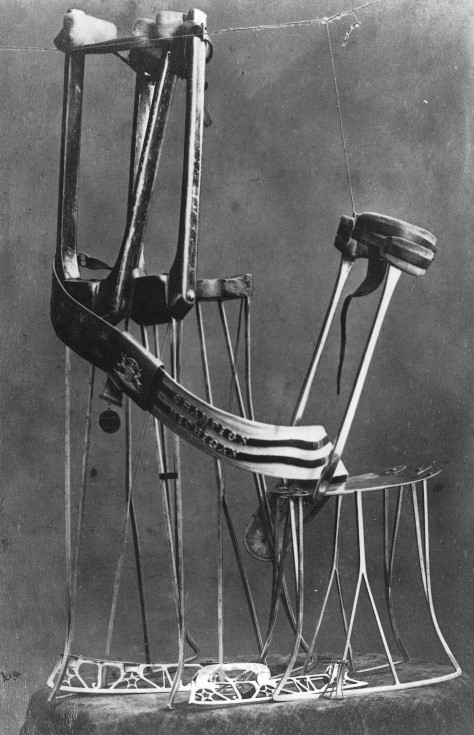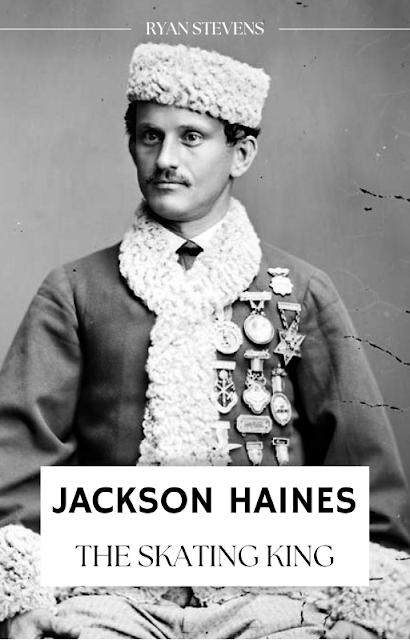Here's a "did you know?" moment if there ever was one. Skating and skiing may not just share the spotlight every four years when the Olympic Winter Games roll into a city (not so) near you. They've been kissing cousins for a while. The skiing world actually has the contributions of two figure skaters and those they inspired to thank for the development of what is now a decimated skiing form called Ski Ballet... which suffered the same fate as figure skating's compulsory figures when the International Ski Federation ceased holding competitions in the discipline in 2000.
Picture it... March 1998. You're curled up in a alpine lodge by a fireplace warming up with a hot chocolate and reading Skiing Heritage Journal... and you stumble upon this: "In 1929, just as alpine technique was threatening to be dominated by a monolithic Alberg System, predictably aha! there came a strong reaction by an Austrian amateur skater named Fritz Reuel. He produced some crazy-looking turns on the wrong, or inside, ski; he even had the gall to write a book called The New Possibilities In Skiing. The book showcased skating turns - made on the inside ski. Reuel urged skating down the slope was even better than stemming down the slope. Reuel got a publicity break when his inside ski turn was given some exposure in the 1930 Arnold Fanck ski film, White Ecstacy. In the film, which was widely popular, there is a sequence showing ski clown Walter Riml trying to learn how to ski with Reuel's book in hand. Riml does a skating turn, a bit shakily at first, then several more with great fluidity - a sequence which remains the first 'freestyle turn' filmed... The skating turn was later named the Reuel, correctly pronounced but incorrectly spelled the 'Royal.' It is still the basic freestyle turn. By now it has a longer, useful life in a less altered form than any other turn of the 1920s." Avon Hilton explained in the September 1993 Skiing Heritage Journal that the Reuel was "a turn on the inside ski. You pushed off with the outside ski and then held it up in the air. You had to link the turns because to do just one of them didn't amount to much. It was not really what you could call a technique, but people who tried it generally did it where no one could see them because they usually fell at first." In addition to being a skater and skiier, Dr. Fritz Reuel was also a professor of physical education. His Reuel - or Royal - became a popularly accepted transition and the basis of a freestyle ski stunt called the 360 degree Royal Spin.
According to John Fry's book "The Story Of Modern Skiing", Reuel's figure skating inspired turns inspired Doug Pfeiffer to begin teaching classes in what he called "monkey business" or "exotic skiing" in 1956 at Snow Summit in California's San Bernardino Mountains. He'd apparently learned of all things - the mambo - in Squaw Valley and translated the turns in the dance to the ski hill. He wrote the world's first English language book on freestyle skiing and demonstrated moves with names quite similar to well known skating moves - the Flying Kick Turn, the Crossover Kick, The Flying Sitz and the Backscratcher. He also introduced, according to the Canadian Encyclopedia, "spinners, tip rolls and crossovers".
Pfeiffer's teachings resonated with Phil Gerard, who like Reuel had a background in figure skating. Gerard was a choreographer, professional ice show skater and even a Broadway dancer in shows with Sammy Davis Jr. Gerard, like Reuel and Pfeiffer, introduced more skating inspired moves that could be performed on short skis and choreographed dances on skis - in effect inventing what is known as ski ballet. Fry's book describes Gerard as "gaunt, intense, with profuse jet-black hair framing an ashen face, he occasionally appeared wasted from a prior evening's surfeit of drugs and alcohol. But he was athletic and immensely talented. He was not alone in advancing the idea the idea of performing to music, as figure skaters do. He coached blond, charismatic Suzy Chaffee, who, more than anyone, brought ski ballet to the public limelight." Ski Ballet would go on to be demonstrated as a sport at both the 1988 Calgary and 1992 Albertville Olympics, but was ultimately dropped like a hot potato by the IOC and I said before, ultimately dropped entirely in 2000 after waning significantly in popularity after being rejected by the good folks at the Olympics.
Today skiing and skating share another important commonality: the snowplow stop. It's one of the first things you learn in CanSkate and ironically one of the first manoeuvres you learn in a beginner ski class as well... only the more modernly used name in skiing for a snowplow stop is a wedge. People make a lot of comparisons between both the basics of skating and skiing much as they do about roller skates or blades and skates but I don't about you, but put me on a pair of skis or roller skates and I have about as much grace as a bull in a china stop. I'll stick with my edges and toe picks, thank you very much, and I have even more respect for anyone to can make a connection between the two. On second thought, the hot chocolate in the alpine lodge sounds more my speed these days... maybe with a little Irish Cream in there, you know, to jazz things up a little! Cheers to you, Fritz Reuel and Phil Gerard!
Skate Guard is a blog dedicated to preserving the rich, colourful and fascinating history of figure skating. Over ten years, the blog has featured over a thousand free articles covering all aspects of the sport's history, as well as four compelling in-depth features. To read the latest articles, follow the blog on Facebook, Twitter, Pinterest and YouTube. If you enjoy Skate Guard, please show your support for this archive by ordering a copy of the figure skating reference books "The Almanac of Canadian Figure Skating", "Technical Merit: A History of Figure Skating Jumps" and "A Bibliography of Figure Skating": https://skateguard1.blogspot.com/p/buy-book.html.
Skate Guard is a blog dedicated to preserving the rich, colourful and fascinating history of figure skating. Over ten years, the blog has featured over a thousand free articles covering all aspects of the sport's history, as well as four compelling in-depth features. To read the latest articles, follow the blog on Facebook, Twitter, Pinterest and YouTube. If you enjoy Skate Guard, please show your support for this archive by ordering a copy of the figure skating reference books "The Almanac of Canadian Figure Skating", "Technical Merit: A History of Figure Skating Jumps" and "A Bibliography of Figure Skating": https://skateguard1.blogspot.com/p/buy-book.html.









































